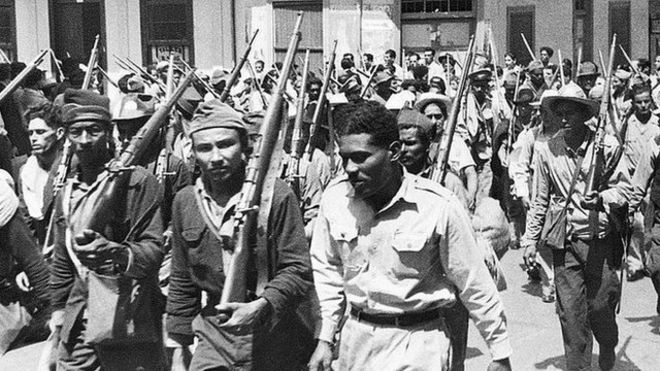Costa Rica and France: the 40s

At the end of the first half of the 20th century, the Cold War was already marking all the countries of the planet with a strong anti-communism. Because of this, tensions began to be generated within countries, some lasted more years, some less, but no region was spared from the confrontations framed in the fight against communism and the Soviet tendency.
Decade of the 40’s
During the 1940s, the cases of Costa Rica and France were similar in some points, mainly during the decade of the 1940s, and there were even some similarities at the end of the processes. After the end of the Second World War, both countries were left in complicated contexts and with a need to rebuild the State in order to meet the needs of their respective peoples. In the case of France, due to the end of the dictatorship of the Vichy regime, the political system was very weakened and with a low level of confidence on the part of the people. Costa Rica, on the other hand, had had a ruling party since 1932 (the Republican Party) and in 1940 it gained more strength with the arrival of Calderonism to power.
In Costa Rica’s case, although the government did not lose the confidence of the people, since it enacted several laws and created institutions that benefited the lower class sectors, it lost the support of the elites with the creation of these social welfare laws (known in combo as Social Guarantees), since these laws were detrimental to the capital income of the country’s big businessmen. The loss of this support reached its peak in 1947 with the signing of the Labor Code. It was at this moment when the elites united to form a strong opposition and called for the Strike of the Fallen Arms, in which all businessmen were forced to stop their activities, leaving the country practically paralyzed.

Political connections
The political links generated by Calderón began to be seen with bad eyes, since he took as allied forces the church and the communist block, recently regrouped under the name of Vanguardia Popular (Popular Vanguard). These alliances, in the already mentioned strongly anticommunist context together with the uneasiness of the elites and the annulment of the 1948 elections, generated that a group of civilians (mainly from the elites such as businessmen, military and exporters) armed themselves in a guerrilla called “Ejército de Liberación Nacional”, supported by the Legión del Caribe and led by the Ramonenese José Figueres Ferrer, giving a coup d’état to the government recently imposed by the parliament.
After the civil war, a constituent assembly was formed, composed of the greatest intellectuals of the time, creating a new Political Constitution and initiating the era of the “Second Republic”. Along with this constitution came a new validation of the democratic system, the creation of institutions such as the INVU, the IMAS, the CCSS, the TSE and rights such as the vote for women and people of African descent, in addition to nationalizing the banking system and maintaining the social guarantees already won since the early 1940s (this due to the pact signed to end the war).
The French case, although it began with the fall of the dictatorship and the fight against fascism in Europe, also had a political system in a process of gradual dismantling. However, in 1945 a vote was taken to approve the formation of a constituent assembly that, including all the parties present in the French political scene, would form the new constitution that would govern the state.
This is how in 1946, after dictatorships and a devastating war, France formed its Fourth Republic with a new constitution that (like Costa Rica’s) provided universal suffrage and limited the power of the presidency, giving more weight to the parliament; but it also left fractures at the ideological level whose frictions led to the fact that only 12 years later a new constitution had to be voted to unify the political system.
Sensorial Sunsets
Navigate articles




